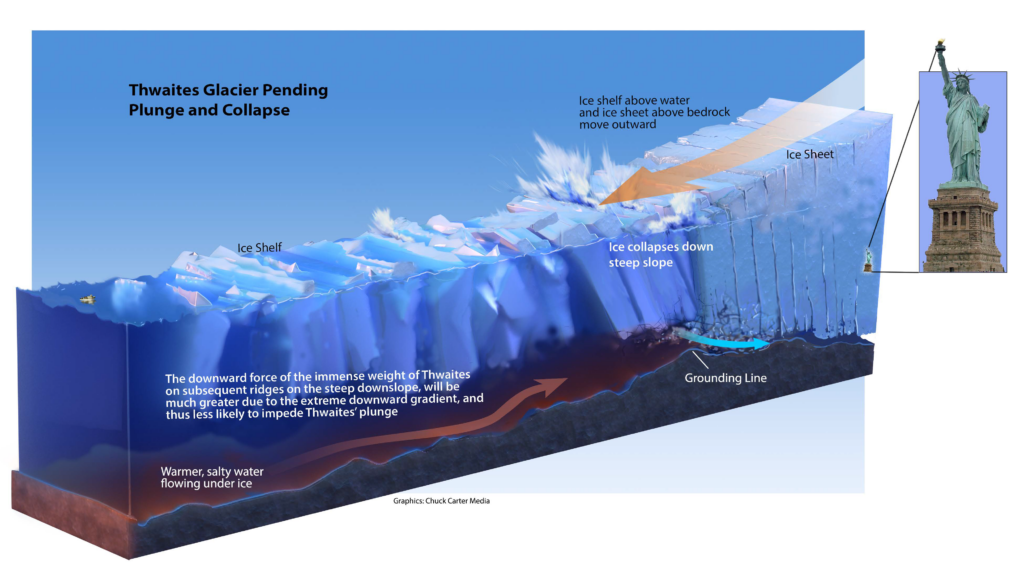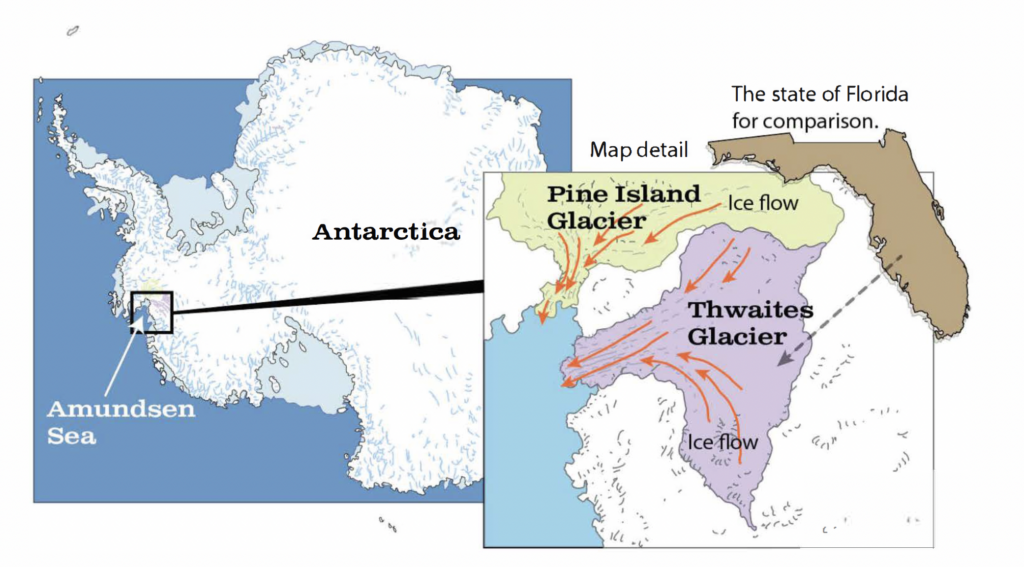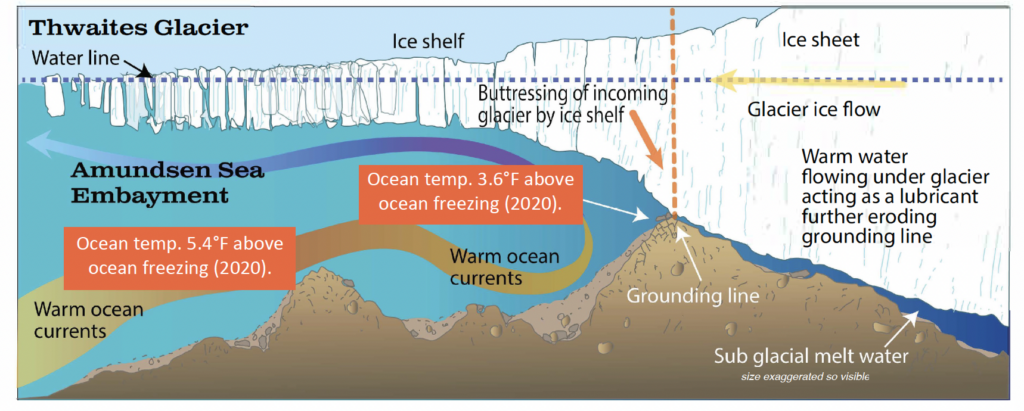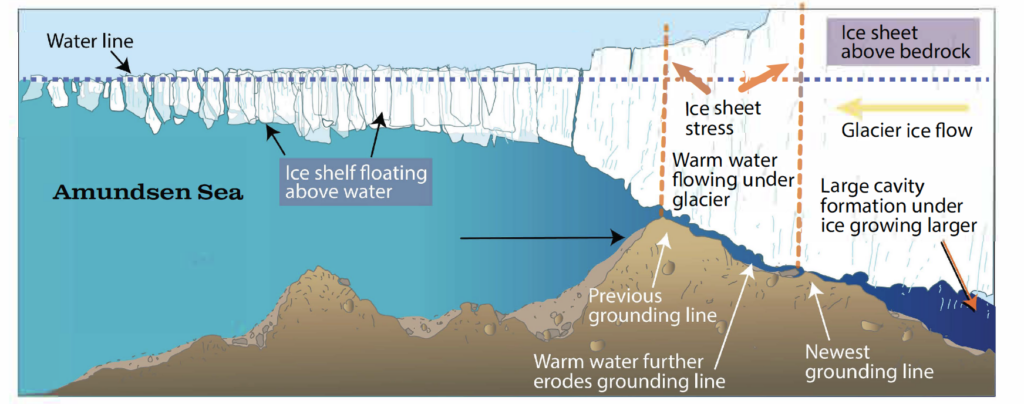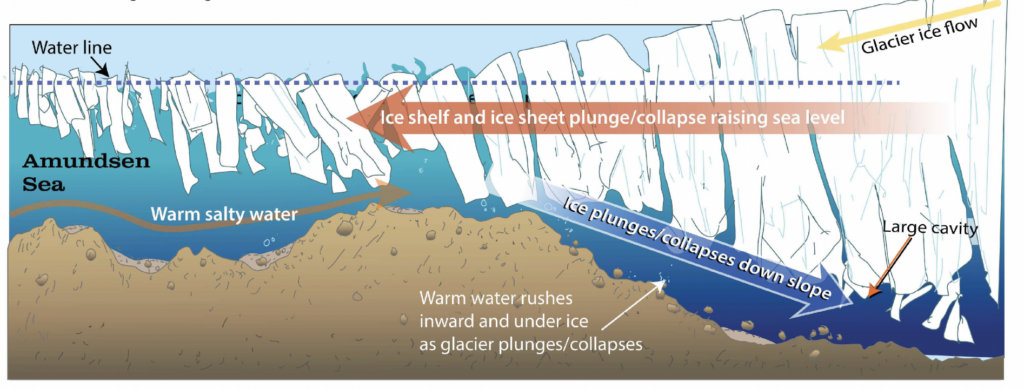By a panel of six experts
Persistent sea level rise presents protection risks to society with expected costs in the trillions of dollars. Public officials often base their assessments of that risk, and what they deem the appropriate level of protection, based on model estimates of how quickly sea levels will rise in the decades ahead and by how much.
Scientists are observing many of these accelerating ice melt phenomena for the first time and cannot know the precise time frames. However, if polar ice melts faster than models estimate, we won’t know about the threat until it’s too late to take action.
Given the costs of being wrong about the rate of accelerating melt, and new risks from destabilization of the Thwaites Glacier in the West Antarctic Ice Sheet, we pose a key question: Are the financial and social risks to society too great to NOT be protected for 2 feet minimum of rise by 2030?

Most models show far less rise by 2030, but given the uncertainty of glacial melting we should be planning for very serious flooding.
New data from the Thwaites Antarctic Glacier demonstrates our case. Sea levels could rise precipitously, as shown in the accompanying graphics of the Thwaites Glacial Collapse, based on the latest data from NASA.
Unfortunately, what happens in the Antarctic does not stay in the Antarctic: Thwaites Antarctic Glacier is already the greatest contributor to global sea level rise, currently providing 2% of global ice melt. Collapse of Thwaites will increase that contribution tenfold.
Historical data indicate that Thwaites collapsed during previous warming periods. Accelerating ice melt and regional geomorphology is again pushing the Thwaites Glacier into irreversible collapse. (See graphics below).
Ice-penetrating aerial imagery collected in 2015-2017 by scientists at NASA’s JPL showed nine miles of “explosive & disturbing” large-scale ice melt under the Thwaites grounding line, resulting in a large water-filled cavity under the ice. The grounding line is the point at the sea ice/rock/ocean interface where the glacier’s slippage is slowed by the bedrock.
In February 2020, scientists with the Thwaites International Collaboration measured ocean temperatures 3.6ºF above freezing at the Thwaites grounding line – a shocking temperature, sufficient to continue melting the underside of the glacier. Satellite radar shows the Thwaites grounding line is moving inland at 1.6 km per year, and is now just 3 km from the edge of a steep, inland-sloping basin wall.
Sea water penetrating this basin is expected to accelerate Thwaites’ inward ice collapse and outward flow of melt water and fractured ice. The IPCC states that estimates of flooding from sea level rise need to be recalibrated based on such substantial melt changes in Antarctica.
To preserve commerce and national security with a margin of safety, the 3.0 RELi national consensus resilience standard proposes that by 2030 the new construction standard for buildings, homes, and infrastructure in coastal areas must incorporate protections against at least 2 feet of sea level rise.
RELi Special Reports calculated protection costs for 2 feet of protection used actual cost data for sea level rise flooding — $326 billion for Massachusetts and $1.9 billion for Pennsylvania. These numbers project to $5 trillion to protect all U.S. coastal communities against 2 feet of sea level rise.
Fortunately, tens of trillions of investor dollars can be put to work in private sector green bonds for individual building and regional government protections. Such financing will be proposed on Sept. 28 at the Higher-Rated Green + Resilient Building Bond CEO Summit, and RELi 3.0 Resilience Standard national public meeting.
THE AUTHORS: Dr. Philip Stoddard, Professor of Biological Sciences, Florida International University, mayor City of South Miami 2010-2020, National Ocean Council, Governmental Coordinating Committee 2015-17 [appointed by The White House].
Dr. Harold Wanless, Professor, Department of Geography and Sustainable Development, University of Miami.
Chuck Carter, Chuck Carter Media Scientific Graphic Art. Produces graphics for NASA JPL.
Doug Pierce, AIA, LEED Fellow, Perkins & Will Global Resilience Design Director, Adjunct Professor, University of Minnesota College of Architecture, Chairman, RELi 3.0 national consensus resilience standard.
Dr. Eric Rignot, Senior Research Scientist NASA Jet Propulsion Laboratory, Donald Bren and Chancellor Professor of Earth System Science, University of California Irvine, Member of the National Academy of Sciences, co-author of the 2007 IPCC Fourth Assessment Report, awarded the Nobel Peace Prize.
Mike Italiano, Esq., CEO, Capital Markets Partnership, former Senior Analyst, White House Science Office, Founder, former Director & General Counsel, U.S. Green Building Council, former Policy Assistant to Program Director, Joe G. Moore, Jr., National Commission on Water Quality.
“The Invading Sea” is the opinion arm of the Florida Climate Reporting Network, a collaborative of news organizations across the state focusing on the threats posed by the warming climate.


